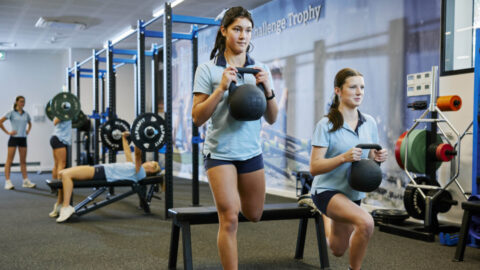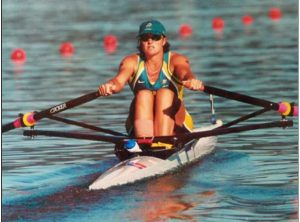When I was a kid…

“It’s a time when many students clear their schedules to focus on academics, but research suggests the grades of adolescents involved in sports throughout high school are unlikely to take a hit. In fact, they may even improve.”
Mary Ward, Sydney Morning Herald
As a young person, I lived on a farm 40 kilometres north of Melbourne, in a small country town called Woodstock. With my two siblings, we enjoyed a rural upbringing and everything that went with living on a farm – from regular jobs around the place, riding horses, carting hay, and helping my parents with the multitude of chores that went with farm life.
As kids, we went to the local primary school, which had no more than 50 students from Prep to Year 6. In the 70s and 80s there were not as many opportunities for organised sport, as there are now. We were lucky to have a local tennis club, where we had lessons after school and attended swimming lessons and squad training once a week. My parents valued physical activity and encouraged us to be involved in sport, even when we were reluctant participants, or perhaps did not excel at the sport being offered.
 From Year 5, I attended an independent girls school, where I was able to tap into many sports and programs. I enjoyed being able to try new sports and have a go. It didn’t take me long to find my strengths and the sports I enjoyed. My experiences at school and beyond, as a member of the Australian Rowing Team from 1993 to 2000, fostered a lifelong respect in me for the benefits of sport, not only for physical health but for wellbeing too. Even now in my 50s, I jog regularly and find time to go to the gym to lift weights for injury prevention.
From Year 5, I attended an independent girls school, where I was able to tap into many sports and programs. I enjoyed being able to try new sports and have a go. It didn’t take me long to find my strengths and the sports I enjoyed. My experiences at school and beyond, as a member of the Australian Rowing Team from 1993 to 2000, fostered a lifelong respect in me for the benefits of sport, not only for physical health but for wellbeing too. Even now in my 50s, I jog regularly and find time to go to the gym to lift weights for injury prevention.
As an educator, I look at the opportunities available for our young people in the 2020s. The sporting opportunities are vast from school and community-based sports with so much more on offer. I look at my children, who have had the opportunity to be involved in community-based sports and organised sport at school, with a range of offerings to choose from, compared to my own limited childhood options.
The health and wellbeing benefits of participating in organised sport are far-reaching. The Australian Sports Commission states, “everyone has the potential to value, develop and maintain positive physical activity behaviours for life. Physical literacy involves holistic lifelong learning through movement and physical activity. It delivers physical, psychological, social and cognitive health and wellbeing benefits.”
The Commission states through physical literacy individuals will benefit in the following ways throughout their lives:
- physical skills and fitness
- the attitudes and emotions that motivate you to be active
- the knowledge and understanding of how, why, and when you move
- the social skills to be active with others.
A colleague recently shared an article with me, published in The Age, which I enjoyed reading, Active children do better at school. So how do we keep teens in sport? The article explores research undertaken at the University of Sydney which analysed the sport participation and academic performance of 4,000 plus students from the age of four to 21, from the Federal Government’s Longitudinal Study of Australian Children. The Study found participation in sport was associated with higher NAPLAN scores, school attendance, and a higher likelihood of university admission.
Interestingly, sports such as dance, tennis and swimming were more closely associated with higher literacy NAPLAN scores, whereas participation in any type of sport was associated with higher numeracy scores.
“Lead researcher Dr Katherine Owen said following children’s participation in sport and academic outcomes over the course of their school life meant it was more reasonable to think the previously established link between playing sport and doing well in the classroom was not coincidental.”
Dr Owen acknowledges team sports foster social connections and these children were less likely to be absent from school. The article notes the importance of physical activity, exercise, and team sports for students studying their VCE. The physical activity allows students to have some time out, mindful activity and allows for more focused time when studying.
“Somebody gives you an opportunity, say yes to it. So what if you fail? You won’t know if you fail or succeed unless you try.”
Ann Meyers, Olympic Basketball player and sportscaster.


